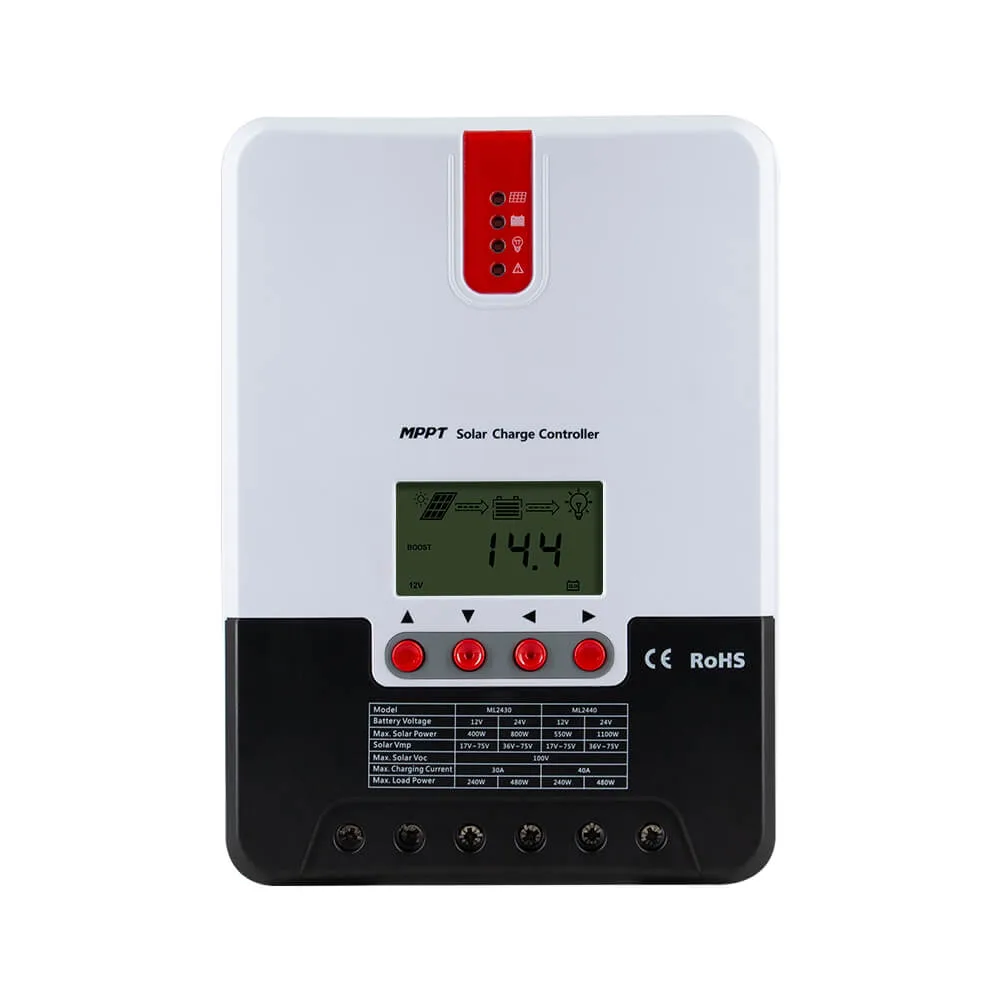
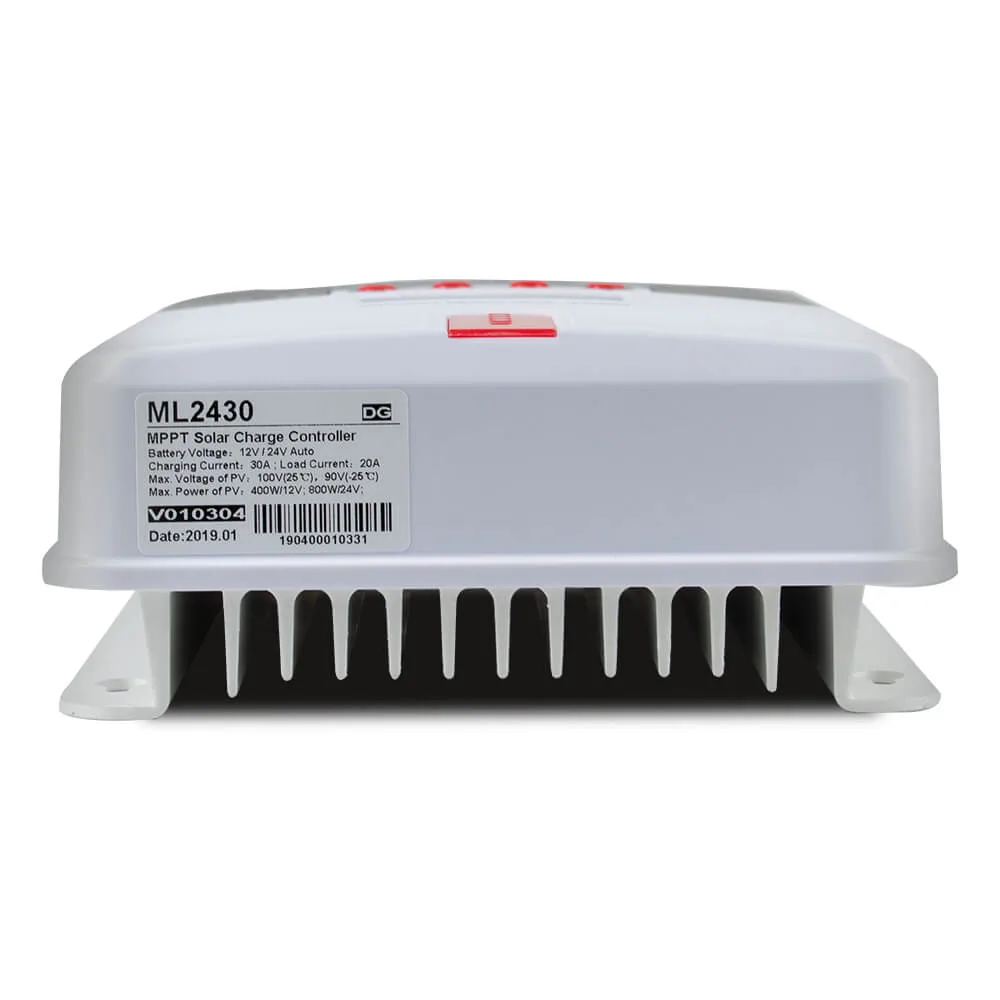
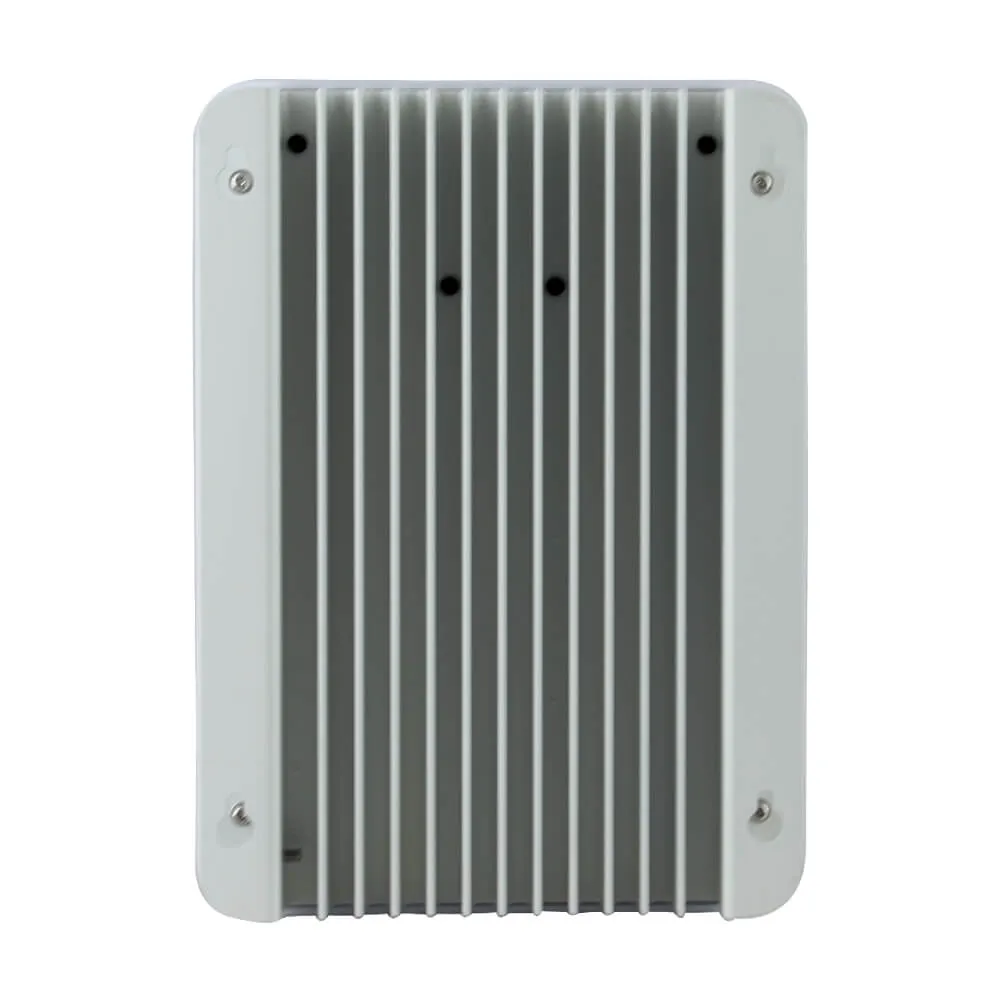
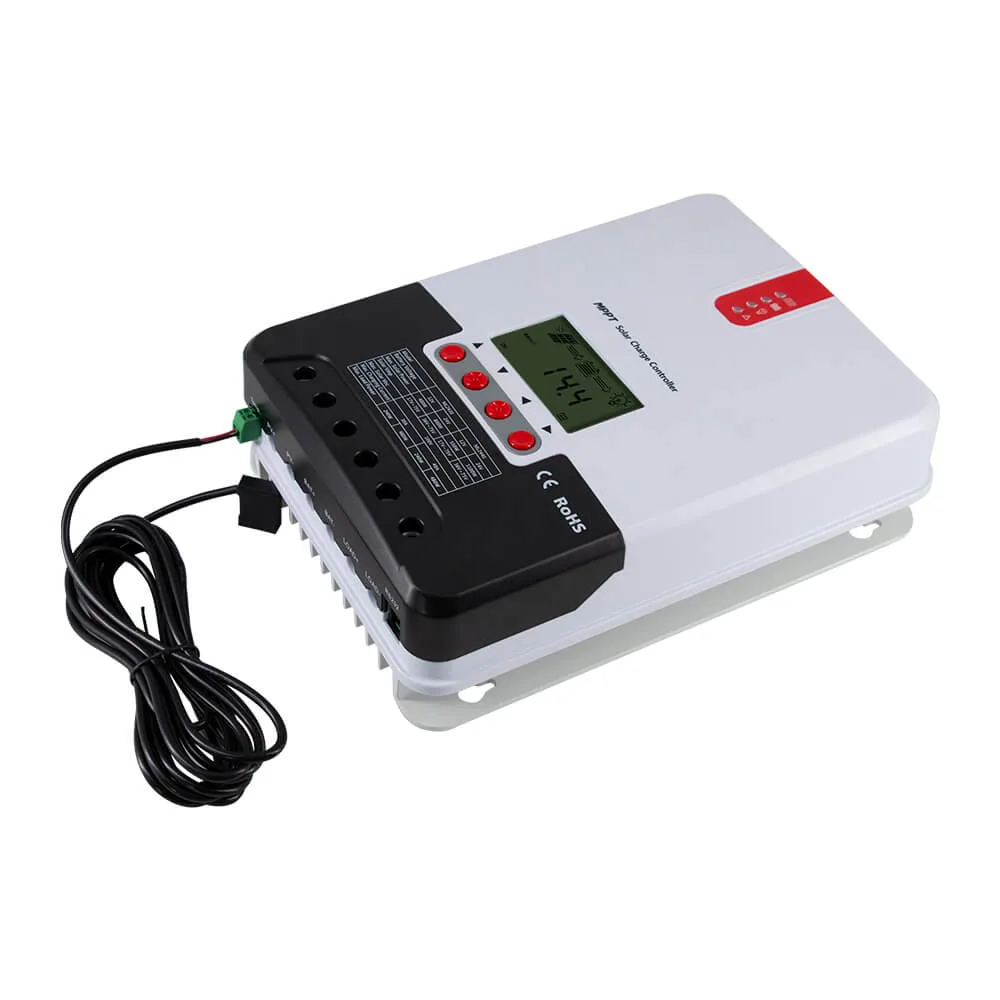
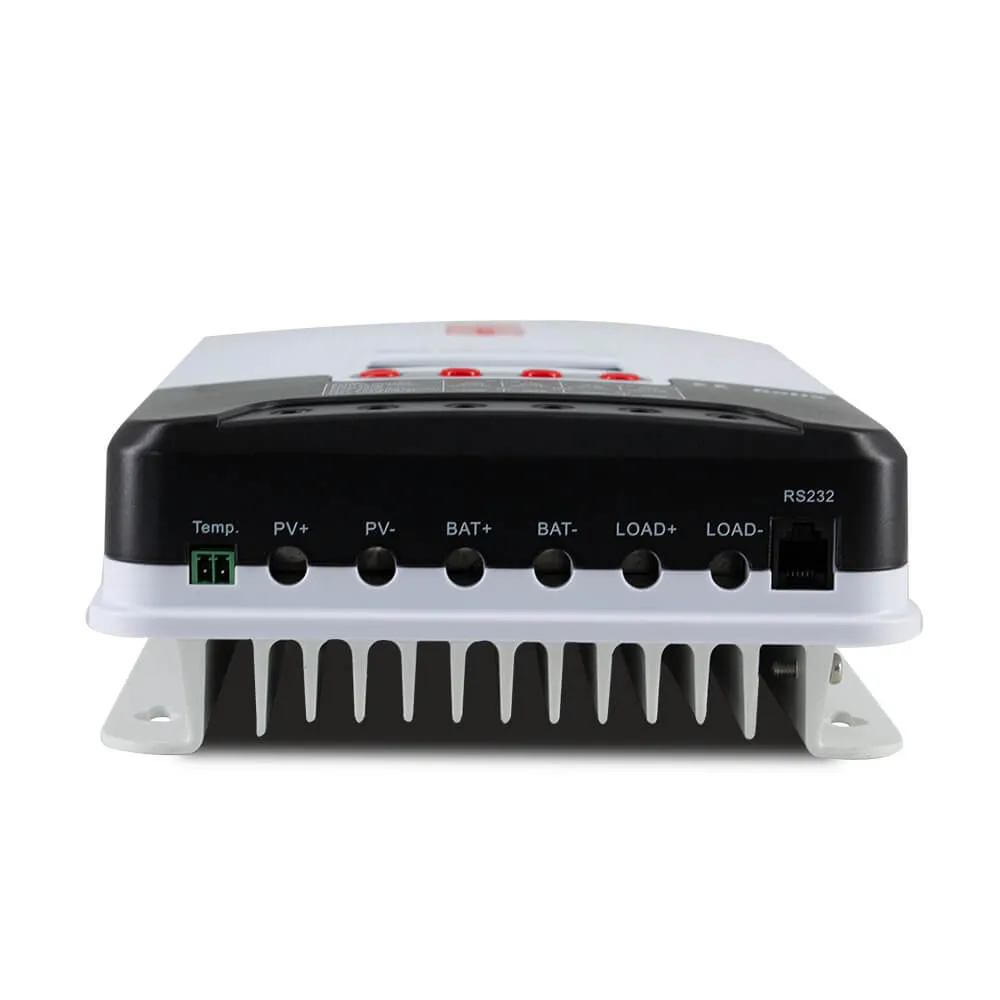
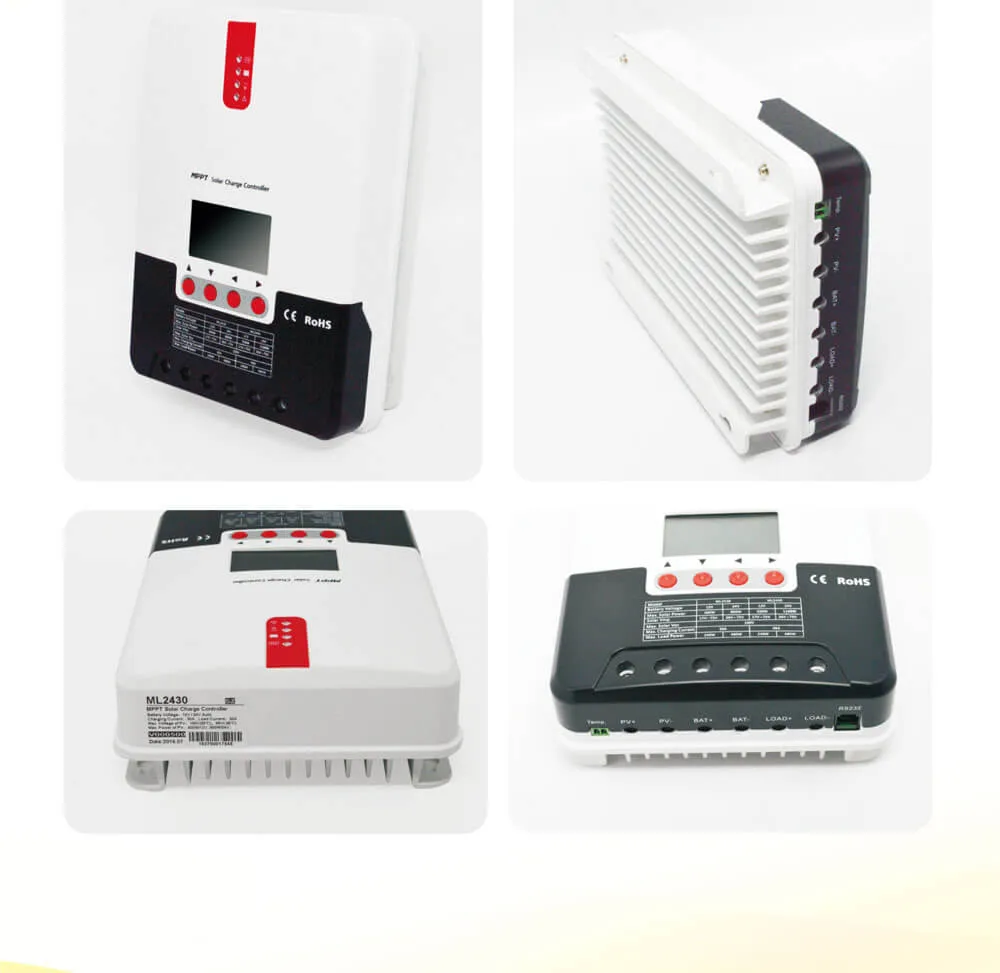

This product can keep monitoring the solar panel's generating power and tracking the highest voltage and current values (VI) in real time, enabling the system to charge the battery in maximum power. It's designed to be used in off-grid solar photovoltaic systems to coordinate operation of the solar panel, battery and load, functioning as the core control unit in off-grid photovoltaic systems.
|
Current:
|
|



FEATURE:
With the advanced dual-peak or multi-peak tracking technology, when the solar panel is shadowed or part of the panel fails resulting in multiple peaks on the I-V curve, the controller is still able to accurately track the maximum power point.
A built-in maximum power point tracking algorithm can significantly improve the energy utilization efficiency of photovoltaic systems, and raise the charging efficiency by 15% to 20% compared with the conventional PWM method.
A combination of multiple tracking algorithms enables accurate tracking of the optimum working point on the I-V curve in an extremely short time.
The product boasts an optimum MPPT tracking efficiency of up to 99.9%.
Advanced digital power supply technologies raise the circuit's energy conversion efficiency to as high as 98%.
Different charging program options including those for gel batteries, sealed batteries and open batteries, customized ones, etc. are available.
The controller features a limited current charging mode. When the solar panel power exceeds a certain level and the charging current is larger than the rated current, the controller will automatically lower the charging power and bring the charging current to the rated level.
Instantaneous large current startup of capacitive loads is supported.
Automatic recognition of battery voltage is supported.
LED fault indicators and an LCD screen which can display abnormality information help users to quickly identify system faults.
Historical data storage function is available, and data can be stored for up to a year.
The controller is equipped with an LCD screen with which users can not only check device operating data and statuses, but also modify controller parameters.
The controller supports standard Modbus protocol, fulfilling the communication needs of various occasions.
All communications are electrically isolated, so users can rest assured in usage.
The controller employs a built-in over-temperature protection mechanism. When temperature surpasses the set value, the charging current will decline in linear proportion to the temperature and discharging will be halted so as to curb the temperature rise of the controller, effectively keeping the controller from being damaged by overheat.
With the help of an external battery voltage sampling function, battery voltage sampling is exempted from the effect of line loss, making control more precise.
Featuring a temperature compensation function, the controller can automatically adjust charging and discharging parameters in order to extend the battery's service life.
The controller also features a battery over-temperature protection function, and when the external battery temperature exceeds the set value, charging and discharging will be shut off so as to protect components from being damaged by overheat.
TVS lighting protection
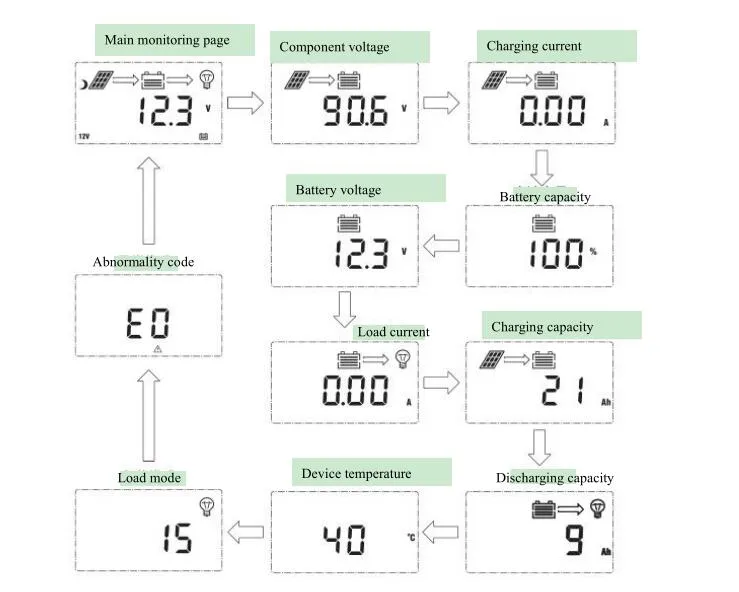
Load modes:
| No. | Mode | Descriptions |
| 0 | Sole light control(nighttime on and daytime off) | When no sunlight is present, the solar panel voltage is lower than the light control on voltage, and after a time delay, the controller will switch on the load; when sunlight emerges, the solar panel voltage will become higher than the light control off voltage, and after a time delay, the controller will switch off the load. |
| 1 to 14 | Light control + time control 1 to 14 hours | When no sunlight is present, the solar panel voltage is lower than the light control on voltage, and after a time delay, the controller will switch on the load. The load will be switched off after working for a preset period of time. |
| 15 | Manual mode | In this mode, the user can switch the load on or off by the keys, no matter whether it's day or night. This mode is designed for some specially purposed loads, and also used in the debugging process. |
| 16 | Debugging mode | Used for system debugging. With light signals, the load is shut off; without light Main monitoring page signals, the load is switched on. This mode enables fast check of the correctness of system installation during installation debugging |
| 17 | Normal on mode | The energized load keeps outputting, and this mode is suitable for loads which need 24-hour power supply. |
MODEL | ML4860 |
Charging mode | MPPT Maximum power point tracking automatically |
Charging | 1. Fast charging 2. Sustaining charging 3. Floating charging |
Soft start time | ≤1S |
No-load loss | 0.7 W~1.2W |
System type | DC12V/24V Recognition automatically |
Max efficiency | ≥98.1% (Voc is 1.5 or 2 times than battery, then it’s best efficiency) |
System voltage |
12V/24V/36V/48V Auto |
PV utilization | ≥99% |
Max PV input Voltage (Voc) |
Battery voltage +2V to 120V |
Max. photovoltaic system input power |
800W/12V; 1600W/24V; 2400W/36V; 3200W/48V |
Rated load current | 60A |
Max Power Point Voltage | Battery Voltage+3V~75V |
Max. capacitive load capacity | 10000uF |
MPPT tracking efficiency | > 99% |
Temperature compensation factor | -3.0mv/ °C/ 2V (default) |
Operating temperature | -35℃ to +45℃ |
Communication method | RS232 RS485 |
Protection degree | IP32 |
Size | 285*205*93mm |